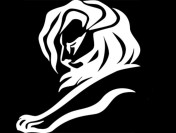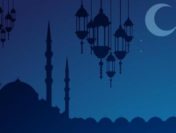
As a Muslim woman who enjoys her fashion, the increasing popularity of Islamic branding is both exciting and self-gratifying. With Muslims consisting of around a fourth of the world’s population, it comes as no surprise that many international brands are taking steps to make their products more ‘Muslim-friendly’. Be it dresses that are modest yet stylish or cosmetic products that can be used any time of the day or even going ‘halal’, Islamic branding is punctuating lives in different ways. This trend emphasizes a shift in marketing strategies that not only acknowledge the modesty of the religion but celebrate that modesty.
Agencies such as Ogilvy Noor, which was set up in 2010 to cater to the needs of the Muslim market, understood this shift. Ogilvy Noor was initiated with an attempt to thoroughly understand the needs of Muslims worldwide, and nuances of the religion itself. The agency cautioned marketers in executive summary, stating, “…And it’s not just that these are great consumers to have on your side — it’s also that they can be potentially vastly damaging to have against you. When faced with a brand that has offended Muslims, almost 99 percent of consumers said that they would stop using it, 65 percent doing so even if the available alternatives were not as good. To make matters even more alarming, a full 83 percent feel it is their responsibility to inform all their friends and family of what they know of the brand’s behavior..’
Some prominent brands that have embraced the ‘Islamic brand’ concept include Mango, DKNY, Zara, Uniqlo, H&M and D&G. While Mango, DKNY and Zara started with launching Ramadan collection for their Middle East customers, Uniqlo launched its special modest wear collection in 2015, which was created in collaboration with designer and internet personality, Hana Tajima. This collection was designed to cater to the cultural needs and modern taste of Muslim women who desire to look fashionable and conservative at the same time.
Muslim fashionista often encountered shock from others when they showed interest in modern fashion trends while sporting a headscarf. This taboo was broken by H&M last year when it released an ad that featured a woman wearing hijab. And the most recent brand to embrace the concept is D&G that released its abaya collection ‘The Allure of the Middle East’ featuring a range of abayas and hijabs. The line, which blends modern high-fashion with modest elements such as high necklines, neutral tones and loose silhouettes, is seen as the company’s first step into the relatively untapped Muslim market. This is very different from the previous attempts to capture the market as abaya would exclusively cater the needs of Muslim women.
Islamic branding is becoming a global phenomenon with international forums delving on the concept, authors penning books and advertising agencies such as J. Walter Thompson taking a closer look at the potential of Islamic branding.
Sheer numbers are a strong indicator of the potential of the Muslim market, and Islamic branding, in that context, offers one of the few examples of ‘low-risk high-reward’ strategies for marketers.




